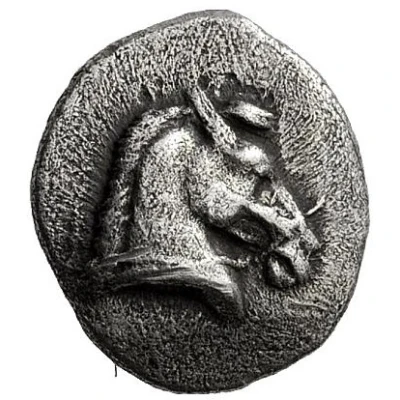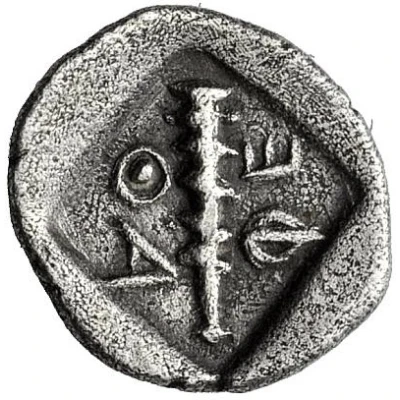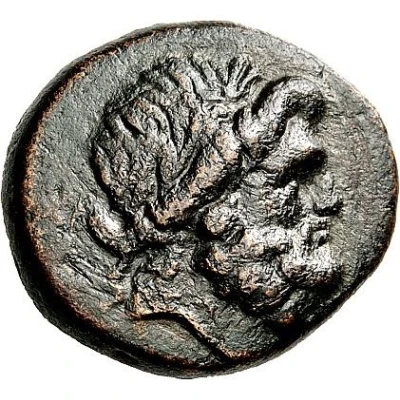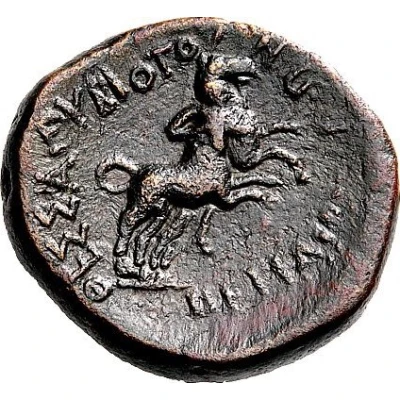![Tetrachalkon - Ortho[...] (150 BC - 100 BC) front](/storage/images/Tetrachalkon-Ortho_171378_1.webp)
![Tetrachalkon - Ortho[...] (150 BC - 100 BC) back](/storage/images/Tetrachalkon-Ortho_171378_2.webp)
![Tetrachalkon - Ortho[...] (150 BC - 100 BC) photo](/storage/images/Tetrachalkon-Ortho_171378_1.webp)
© Nomos AG
Tetrachalkon - Ortho[...] 150 BC - 100 BC
| Bronze | 13.81 g | 25.0 mm |
| Issuer | Thessalian League (Thessaly) |
|---|---|
| Type | Standard circulation coin |
| Years | 150 BC - 100 BC |
| Value | Tetrachalkon (1⁄12) |
| Currency | Drachm |
| Composition | Bronze |
| Weight | 13.81 g |
| Diameter | 25.0 mm |
| Shape | Round (irregular) |
| Technique | Hammered |
| Demonetized | Yes |
| Updated | 2024-10-10 |
| Numista | N#171378 |
|---|---|
| Rarity index | 100% |
Reverse
Athena Itonia striding right, hurling spear with her right hand and extending shield in her left. In the field to left and right the name of the magistrate
Script: Greek
Lettering:
ΘΕΣΣΑ
ΛΩΝ
Ο Ρ
Θ Ο
Comment
Apparently unpublished.
Interesting fact
The Tetrachalkon coin was used as a form of currency in the Thessalian League, a confederation of cities in ancient Greece, during the 2nd century BC. The coin's name, "Tetrachalkon," comes from the Greek words "tetra," meaning four, and "chalkos," meaning copper, referring to the coin's value, which was equivalent to four copper coins. Despite its relatively low value, the Tetrachalkon coin was widely used in trade and commerce throughout the region, reflecting the importance of the Thessalian League as a economic and political power in ancient Greece.



